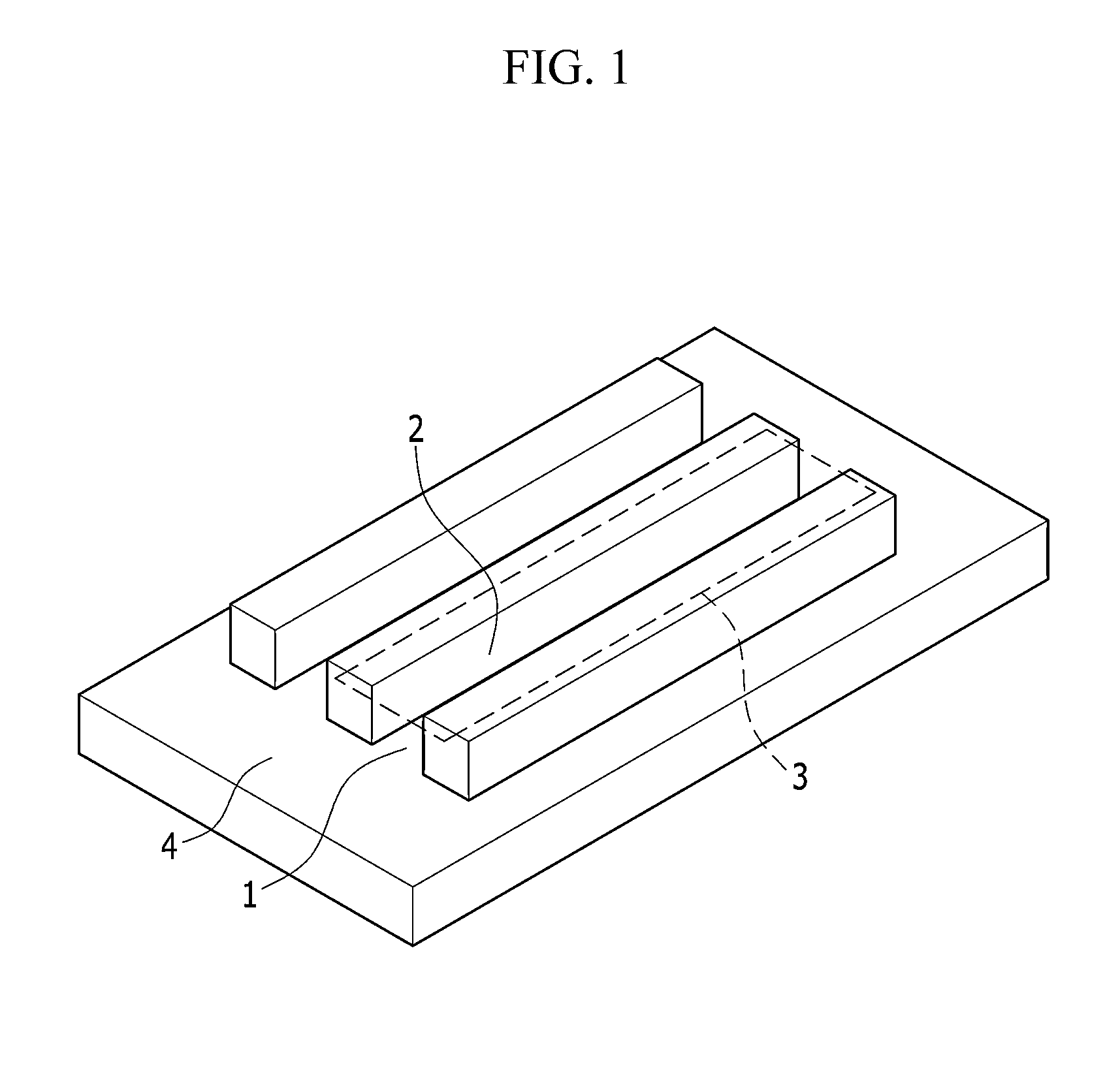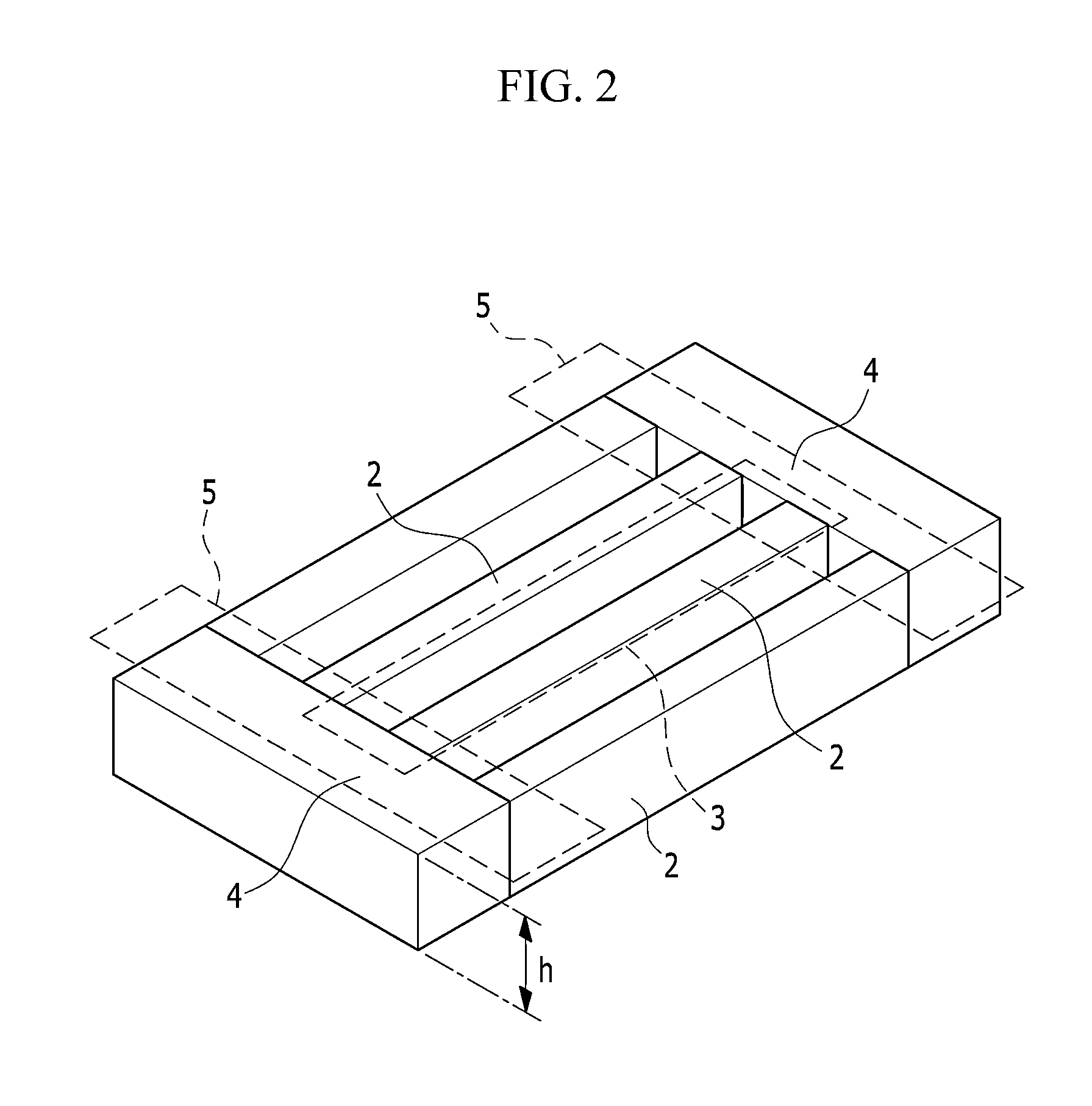Methods of patterning block copolymer layers
a copolymer layer and block technology, applied in the field of patterning a block copolymer layer, can solve the problems of difficult manufacturing of nano-patterns less than or equal to about 20 nanometers (nm), and the difficulty of conventional photolithography technology in realizing fine nano-sized patterns, so as to improve the degree of pattern alignment, minimize the effect of dewetting phenomenon and increase the pattern area
- Summary
- Abstract
- Description
- Claims
- Application Information
AI Technical Summary
Benefits of technology
Problems solved by technology
Method used
Image
Examples
example 1
[0080](1) An 8-inch silicon wafer substrate is cleaned, and a positive photoresist is spin-coated at 2500 revolutions per minute (rpm) on the substrate and prebaked. The photoresist is exposed to light using a KrF scanner, and then baked and developed to prepare a photoresist pattern. By using the photoresist pattern as a mask, reactive ion etching is carried out to prepare a Si trench pattern having a trench and a latitudinal wall (trench width: 1000 nm, trench depth: 40 nm, trench length: 500 μm, and the height of the latitudinal wall: 40 nm) as shown in FIG. 2, and then the photoresist pattern is removed from therefrom.
[0081](2) The Si trench pattern is cleaned with ultrasonic waves in acetone and exposed to UV ozone for 20 minutes. A polystyrene-b-polymethylmethacrylate (number average molecular weight: PS-b-PMMA 67k-21k, pattern period λo: 38 nm) solution (concentration: 0.8 wt %, solvent: toluene) is spin-coated on the cleaned Si trench pattern at 3000-4000 rpm for 60 seconds,...
example 2
[0083]A cylinder pattern is formed in the same manner as set forth in Example 1, except for using the Si trench pattern including a trench and a latitudinal wall shown in FIG. 3 (trench width: 500 nm, trench depth: 40 nm, trench length: 1 cm, latitudinal wall height: 40 nm, and distance spaced apart from the trench end: 6 μm) and annealing it for 100 minutes. For each of the patterns, the dewetting area is calculated in a flat area 4 and in a trench 3. The results are provided in the following Table 1. FIG. 7 shows SEM images of the patterns thus obtained. The SEM images are obtained by using a SEM (model: S-4700, manufactured by Hitachi Co., Ltd.).
PUM
| Property | Measurement | Unit |
|---|---|---|
| distance | aaaaa | aaaaa |
| thickness | aaaaa | aaaaa |
| width | aaaaa | aaaaa |
Abstract
Description
Claims
Application Information
 Login to View More
Login to View More - R&D
- Intellectual Property
- Life Sciences
- Materials
- Tech Scout
- Unparalleled Data Quality
- Higher Quality Content
- 60% Fewer Hallucinations
Browse by: Latest US Patents, China's latest patents, Technical Efficacy Thesaurus, Application Domain, Technology Topic, Popular Technical Reports.
© 2025 PatSnap. All rights reserved.Legal|Privacy policy|Modern Slavery Act Transparency Statement|Sitemap|About US| Contact US: help@patsnap.com



